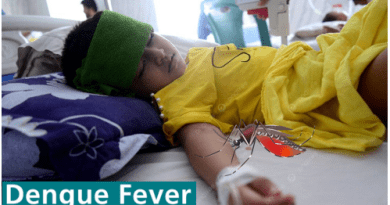Global crop protection chemicals market valued at $57b – Research and Markets
The global crop protection chemicals market was valued at $57.5 billion in 2018 and is projected to register a CAGR of 3.4% between 2019 and 2024 according to a report by Research and Markets.
The herbicides accounted for the largest share of 42.7% in the market, followed by fungicides and insecticides with 28.4% and 24.3% in 2018, while nematicides are the fastest-growing market over the forecast period.
The crop protection chemical industry has been transforming over the years, with robust growth, coupled with changing crop mix trends, and environmental regulations. Growing population, declining arable land, food security, and the need for augmented agricultural productivity are the significant factors, which are driving the demand for higher agricultural output, thus augmenting the growth of the pesticide industry, globally.
Increasing R&D cost, low per capita use of crop protection chemicals in several developing economies and ban in pesticides in certain regions are the major factors, which act as restraints to the market.
Owing to the escalating demand for food safety and quality, biopesticides are gaining popularity over their synthetic counterparts. Relatively low R&D costs associated with the former is also a major factor that is driving the biopesticides market.
Being less detrimental to humans, animals, and environment, highly target-specific with no danger to non-target species, and biopesticides’ capability to rapidly decompose without leaving any noxious residues are the other principal factors, which are contributing to the growth of the market.
Valent Biosciences Corporation, Koppert BV, Certis USA LLC, Bayer Cropscience AG, and Syngenta are the leading companies, which are operating in the biopesticides market.
The lower residual toxicity levels of biopesticides against synthetic crop protection chemicals make them ideal inputs to be used in organic agriculture.
The demand for organic fruits and vegetables has been witnessing an upward trend over the years, which in turn, led to the increment in the prominence of organic farming with the area under organic farming accelerated from 48.8 million ha in 2014 to 69.8 million ha in 2017 across the globe. Therefore, this has boosted the demand and production of biopesticides.
China, Japan, India and Australia accounted for more than 80% share in the crop protection chemicals market in Asia-Pacific in 2018. In China, the Ministry of Agriculture introduced the Zero Growth Policy of Pesticides and Fertilizers by 2020 in 2015, in order to phase out the use of synthetic pesticides and promoted the use of bio-based and organic pesticides.
Furthermore, China, being the largest producer of cotton, has increased the adoption of GMO cotton, which also resulted in a substantial reduction in the use of chemical pesticides across the country.
In India, synthetic pesticides have been extensively used for alleviating the loss of crops, due to the high incidence of pests and diseases. Major factors driving the Indian pesticides market include higher demand for food grains, limited availability of arable land, along with elevating exports, growth in horticulture and floriculture, and increasing public awareness regarding pesticides and biopesticides.
However, in Japan, companies are highly focused on conducting R&D activities, which is the backbone of the introduction of new and advanced pesticide products. For instance, in April 2017, Syngenta had launched an insecticide Minecto Duo for vegetable crops.
Also, in 2018, BASF had co-developed a new insecticide, Inscalis. with a Japanese company, Meiji Seika Pharma Co. Ltd, in order to protect crops from critical piercing and sucking insect pests.
The crop protection chemicals market is highly consolidated, with major players including Syngenta, Bayer CropScience AG, Corteva, Adama Agricultural Solutions Ltd, and Nufarm Limited accounted for more than 50% share in the global crop protection chemicals market.
New product launches, mergers & acquisitions and partnerships are the major strategies adopted by these leading companies in the market. These companies are also focusing on making an investment in innovations, collaborations, and expansions, in order to increase their market share.




